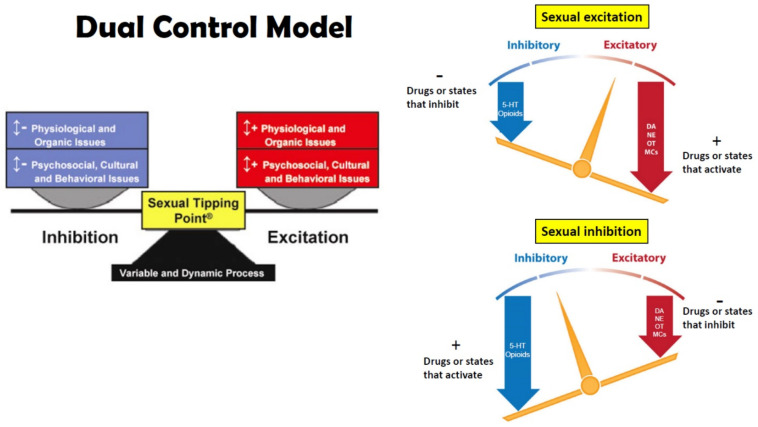Figure 2.
Left: dual control model of Perelman [1] (Reprinted with permission from Perelman, 2006, Wiley) that depicts sexual excitation and inhibition forming around a labile sexual tipping point. The dual-control model is based on work by Bancroft and Janssen [4], who based their model on the work of Gray [24] for fear conditioning. Gray, in turn, based his ideas on those of Pavlov [25] for the role of excitation and inhibition of cortical function in conditioned reflexes. Right: neurochemical mechanisms and processes associated with sexual excitation and inhibition. DA = dopamine, NE = norepinephrine, OT = oxytocin, MC = melanocortins, 5-HT = serotonin, reprinted with permission from Pfaus [3] (2009, Elsevier).

